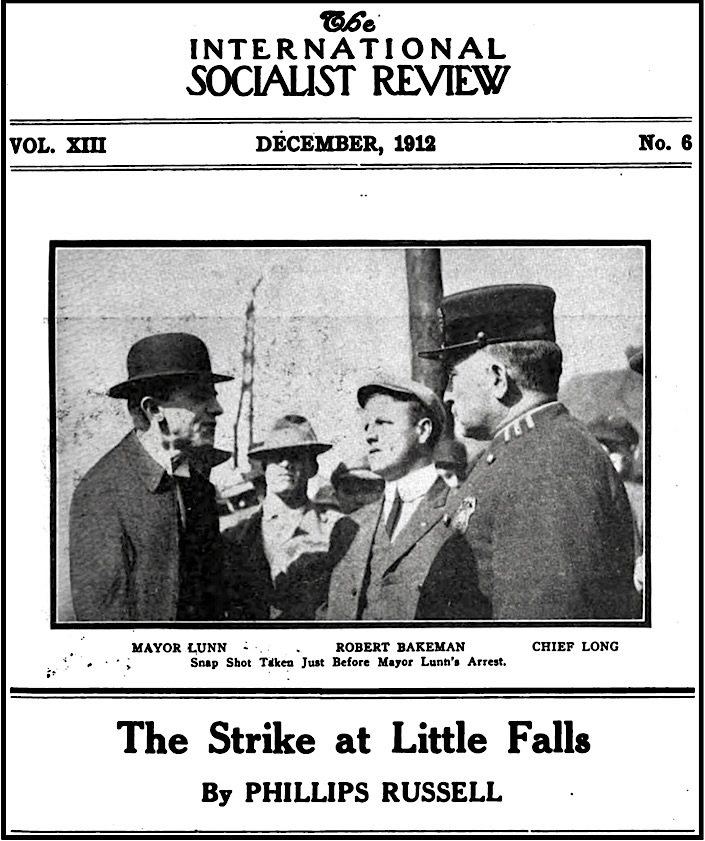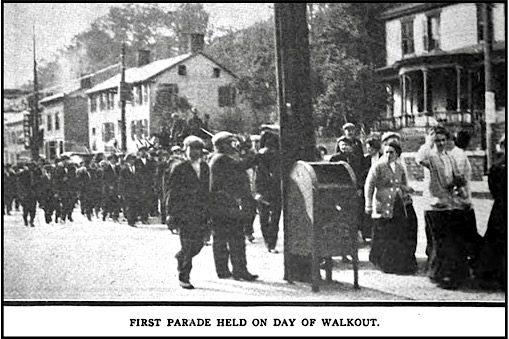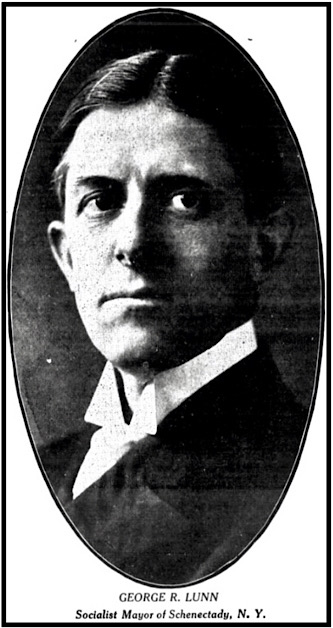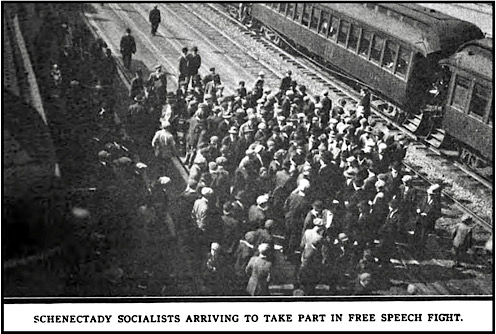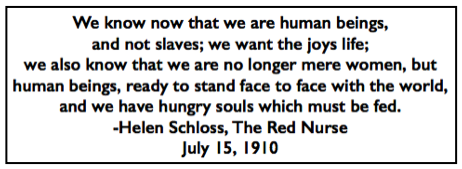 —————
—————
Hellraisers Journal – Monday December 2, 1912
Little Falls, New York – Textile Workers Revolt Against Pay Cut, Part I
From the International Socialist Review of December 1912:
[Part I of II]
ON October 1 of this year a law went into effect in the state of New York making it illegal for female industrial slaves to work more than 54 hours a week. Some employers immediately took advantage of the situation and paid their workers what they call “pro rata”-that is, they punished the beneficiaries of this law by reducing the contents of their pay envelopes to correspond with the reduced number of hours. Departments of industry are so closely connected nowadays that the men were affected in an equal degree with the women.
Slaves in most parts of the state seem to have received the reduction with submission, but not so the employes of the knitting mills in Little Falls. When their second pay day came around and they found their $7 envelopes short from 60 cents to $2, they did what the mill workers of Lawrence did in a similar situation-they rebelled.
On October 10 more than 1,500 workers, embracing nearly all the departments in the Phoenix and Gilbert Knitting Mills and four nationalities-Polish, Slavish, Austrian and Italian-walked out and poured into the streets to the sound of “The Marseillaise.” The Americans stayed and scabbed.
The revolt was entirely spontaneous and most of the workers were uncertain what to do next, but a few of them knew. They appealed to the one organization that can handle such a situation-the I. W. W. Organizers Fillippo Bochino and Fred Hirsh came hurrying from Rochester and Schenectady respectively, and the battle was on.
The first few days were quietly spent in putting the strike on an organized basis, and then as the need for a good chairman for the strike committee became evident, Benjamin J. Legere, a fighting Socialist and graduate of the Lawrence school was sent for. Though he was just entering on a short vacation after several months of exhausting work agitating for the Ettor-Giovannitti defense, he arrived promptly. He showed the strikers how to form a mass picket line that moves in an endless chain and helped to get all the different committees in working order.
Robert A. Bakeman, a clergyman who, as he later expressed it in police court is “now an honest man,” as a member of the street cleaning force in Schenectady, came up to speak to the strikers. He told the police that he intended to speak in the open air and no objection was made. But Chief of Police James Long soon afterward found occasion to visit the office of Manager McLaughlin of the Phoenix Mills and when the chief emerged it was with his club gripped in his hand. He ordered Bakeman off his soap box, and when Bakeman refused, he was arrested.
George Lunn, Socialist Mayor of Schenectady, then came up to address the strikers and promptly got arrested, together with his wife. Other arrests followed thick and fast. Speakers were pulled off the box in Clinton Park, near the mills, while reading from the Constitution of the United States, from the Declaration of Independence and even from the Bible. Mayor Lunn declared that he would rot in the city jails before he would yield his constitutional rights and stop speaking on the streets.
The fuss that followed, however, was not liked by the mill owners and the city authorities, and the free speech fight was soon won as far as Clinton Park was concerned.
But the strike went on. Very quietly. Too quietly. That mass picketing was dangerously effective and it became necessary to break it up. So Chief “Dusty,” now “Bully” Long, ordered out his force of six regular men, augmented by a motley assortment of specials, detectives, plain-clothes men, and private guards, on the morning of October 30 and placed them near the door of the Phoenix Mills. Still nothing happened until, so the strikers say, Chief Long prodded a young girl in the breasts with his club. Repressed bitterness then burst forth. A general melee occurred in which strikers, men and women alike, were beaten senseless to the ground. Detective Kenney, from an Albany corporation, was cut slightly in the ear and rear pants, and two shots were fired, one of which struck Policeman Haley, a new member of the force, in the leg.
It was first announced that a girl had done the cutting of Kenney. Then it was Legere that did it. The detective is over six feet high and probably weighs close to 200 pounds. Legere is short and slight and friends who know the smiling boy, who used to write plays in Bridgeport, Conn., were astonished to hear him depicted as such a bloody and murderous character. The strikers say it was a bullet from the revolver of an agitated “special” that struck Haley, but the police contend it was Bochino, who is a foreigner and therefore a suspicious and dangerous character.
[Emphasis and photograph of Mayor Lunn added.]
~~~~~~~~~~~~~~~~~~~~~~~~~
SOURCES & IMAGES
Quote Helen Schloss, Women w Hungry Souls,
Black Hills Dly Rg p2, July 15, 1910
https://www.newspapers.com/image/91659036
International Socialist Review
(Chicago, Illinois)
-Dec 1912, page 455
https://www.marxists.org/history/usa/pubs/isr/v13n06-dec-1912-ISR-gog-ocr.pdf
IMAGE
George Lunn, Socialist Mayor of Schenectady NY,
Cmg Ntn p11, Nov 2, 1912
https://www.newspapers.com/image/488969159/
See also:
The Little Falls Historical Society Museum
“1912 LITTLE FALLS TEXTILE STRIKE”
https://littlefallshistoricalsociety.org/museum-exhibit/1912-little-falls-textile-strike/
“In November we remember: the centennial of the 1912 Little Falls textile strike” by Brendan Maslauskas Dunn. “An overview of the Little Falls textile strike of 1912. First published in November 2012 in the Industrial Worker.”
https://libcom.org/article/november-we-remember-centennial-1912-little-falls-textile-strike-brendan-maslauskas-dunn
Wednesday, January 5, 2011
“Socialists, Anarchists & the Little Falls Textile Strike of 1912”
-by Michael Cooney
https://upstateearth.blogspot.com/2011/01/iww-great-textile-strike-of-1912-in.html
The Red Nurse by Michael Cooney
https://upstateearth.blogspot.com/2012/01/new-book-marks-centennial-of-great.html
“Tales from the Rock City” by Helen Schloss, 1913
https://upstateearth.blogspot.com/2016/11/tales-from-rock-city-by-helen-schloss.html
Strike Story
Dramatic Re-Telling of the Story of the
Little Falls Textile Strike of 1912
-by Angela Harris
Createspace Independent Pub, Sep 9, 2013
https://books.google.com/books?id=bn3PngEACAAJ
~~~~~~~~~~~~~~~~~~~~~~~~~
Which Side Are You On – Tom Morello
“There’s one law for the rulers and one law for ruled.”

